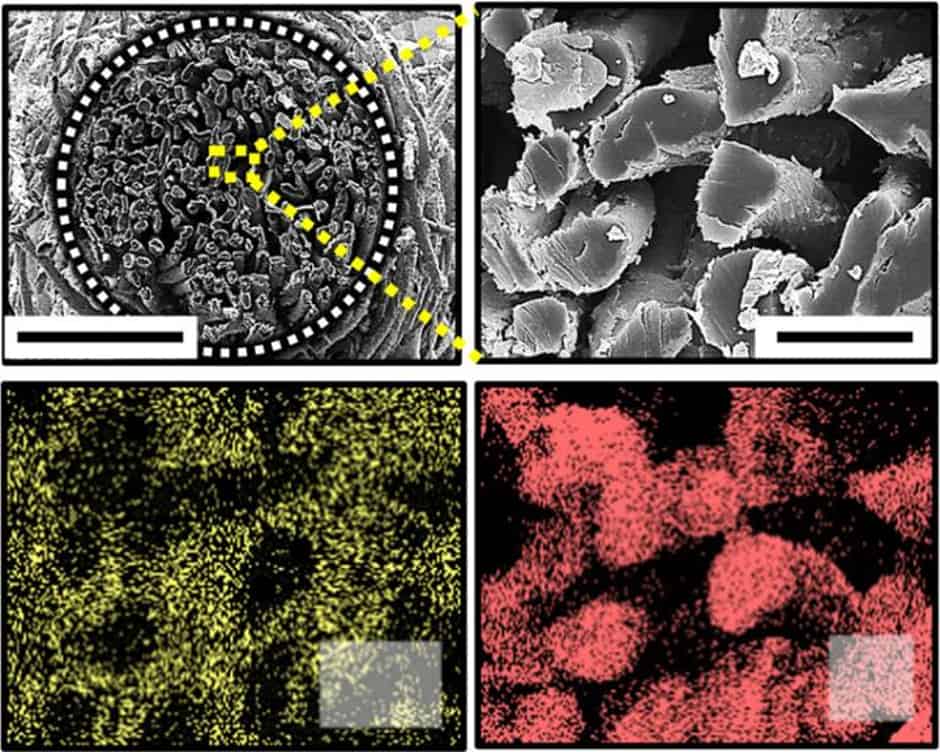
The new fuel cell is claimed to provide twice as much power as conventional biofuel cells and could be paired with batteries or supercapacitors to provide a hybrid power source for the medical devices.
Researchers at the Georgia Institute of Technology (GATECH) and Korea University said that gold nanoparticles assembled on the cotton created high-conductivity electrodes that helped improve the fuel cell's efficiency. That allowed them to address one of the major challenges limiting the performance of biofuel cells, namely connecting the enzyme used to oxidise glucose with an electrode.
A layer-by-layer assembly technique used to fabricate the gold electrodes - which provide the electrocatalytic cathode and the conductive substrate for the anode - helped boost the power capacity to as much as 3.7mW/cm2. Results of the research are reported in Nature Communications.
"We could use this device as a continuous power source for converting chemical energy from glucose in the body to electrical energy," said Seung Woo Lee, an assistant professor in Georgia Tech's Woodruff School of Mechanical Engineering. "The layer-by-layer deposition technique precisely controls deposition of both the gold nanoparticle and enzyme, dramatically increasing the power density of this fuel cell."
Fabrication of the electrodes begins with porous cotton fibre composed of multiple hydrophilic microfibrils - cellulose fibres containing hydroxyl groups. Gold nanoparticles about eight nanometres in diameter are then assembled onto the fibres using organic linker materials.
To create the anode for oxidising the glucose, the researchers apply glucose oxidase enzyme in layers alternating with TREN, an amine-functionalised small molecule. The cathode used the gold-covered electrodes, which have electrocatalytic capabilities.
"We precisely control the loading of the enzyme," Lee said. "We produce a very thin layer so that the charge transport between the conductive substrate and the enzyme is improved. We have made a very close connection between the materials so the transport of electrons is easier."
According to GATECH, the porosity of the cotton allowed an increase in the number of gold layers compared to a nylon fibre. "Cotton has many pores that can support activity in electrochemical devices," said Yongmin Ko, a visiting faculty member and one of the paper's co-authors. "The cotton fibre is hydrophilic, meaning the electrolyte easily wets the surface."
Beyond improving the conductivity of the electrodes, the cotton fibre could improve the biocompatibility of the device, which is designed to operate at low temperature to allow use inside the body.
Implantable biofuel cells suffer from degradation over time, and the new cell developed by the US and Korean team is claimed to offer improved long-term stability. "We have a record high power performance, and the lifetime should be improved for biomedical applications such as pacemakers," Lee said.
Pacemakers and other implantable devices are now powered by batteries that last years, but may still require replacement in a procedure that requires surgery. The biofuel cell could provide a continuous charge for those batteries, potentially extending the time that devices may operate without battery replacement, Lee added.




Poll: Should the UK’s railways be renationalised?
If your case is that privatising the railways accelerated the trend towards private car ownership, well, you're just plain wrong. Chart 7 <i>from your...